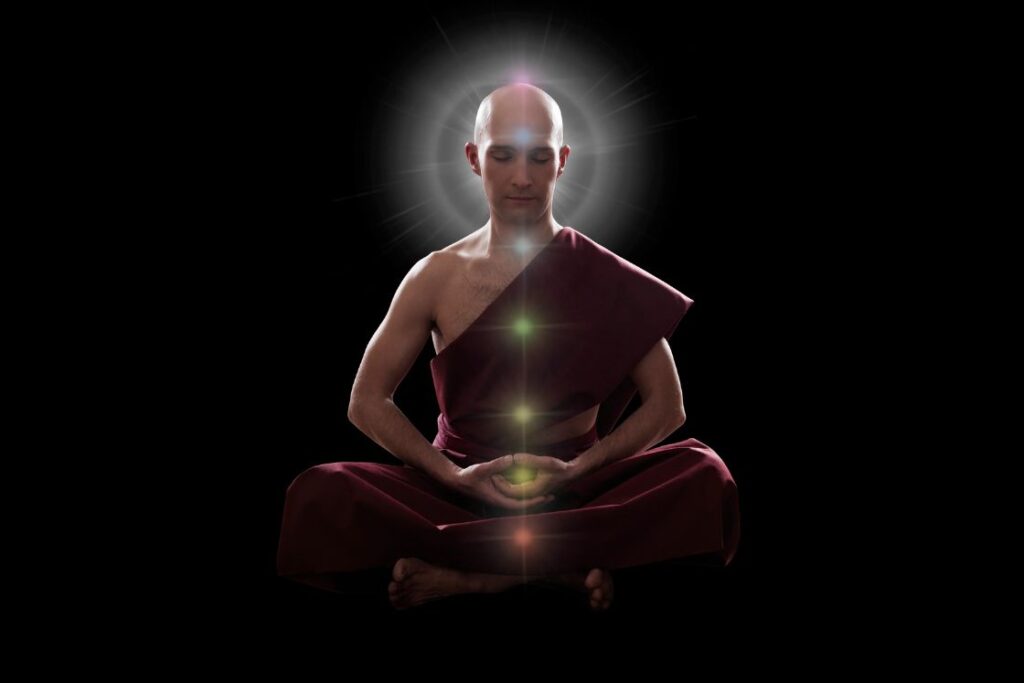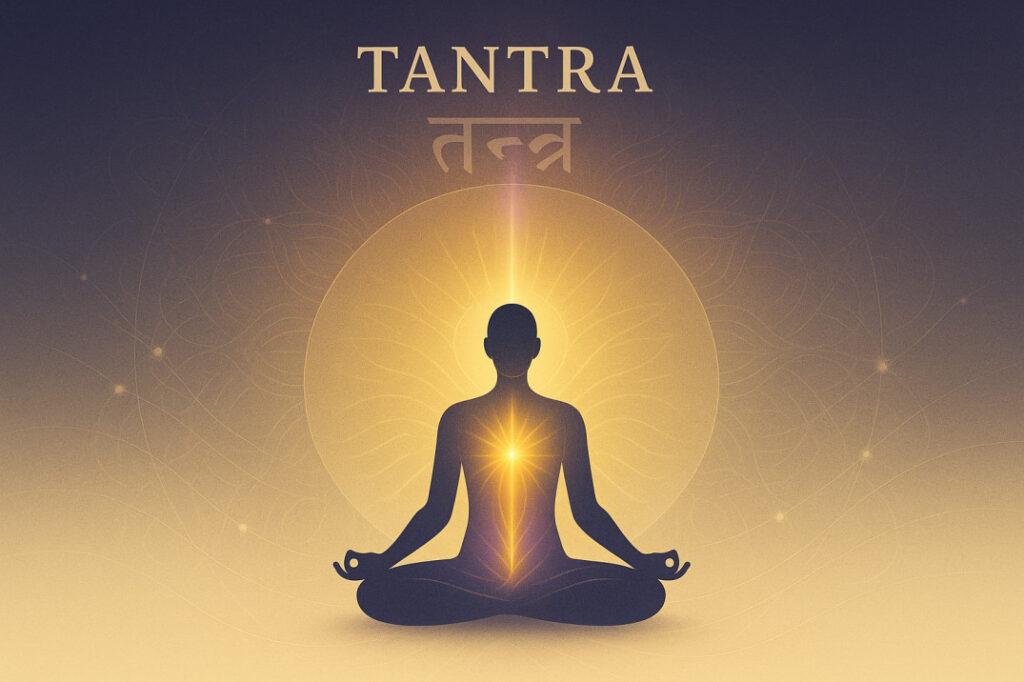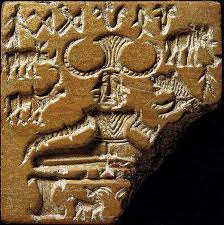A
Anubhav
Guest

Tantra Yoga is one of the most ancient systems of spiritual growth, yet also one of the most misunderstood. Many people today associate Tantra with rituals or sensual practices, but in truth, it is a sacred path that helps you connect your body, mind, and spirit as one.
In Sanskrit, the word Tantra means “to expand” and “to liberate.” It points to a way of life that widens awareness and frees us from ignorance and limitation. Tantra Yoga brings this wisdom into practice through the body, breath, sound, and energy- awakening the hidden power that lies within.
While many spiritual paths encourage withdrawal from the world, Tantra Yoga teaches that life itself is the practice. Every experience- joy, pain, movement, or silence- becomes a doorway to self-realisation. It is a yoga that welcomes everything and guides you to see the divine in every moment.
This article explores the true meaning of Tantra, its ancient roots, core philosophy, and practical methods. You will also discover how Tantra Yoga transforms the body and mind, helping you live with awareness, freedom, and balance.
What is tantra? the true meaning beyond misconceptions

When people hear the word Tantra, they often think of mystery or secrecy. Over time, its real meaning has been covered by modern misinterpretations. In truth, Tantra is not about indulgence or desire- it is a vast and ancient philosophy that teaches how to understand life deeply and realise the divine through every experience.
The word Tantra comes from two Sanskrit roots:
- Tan, meaning “to expand”
- Tra, meaning “to free or liberate”
Together, they describe a path of expansion and liberation – a way of widening awareness and seeing that everything in the universe is connected by one consciousness.
Tantra does not ask you to reject your body or emotions. Instead, it helps you understand and use them as tools for awakening. Every experience, pleasant or painful, becomes part of your growth. This is what makes Tantra unique: it turns daily life into a path of awareness.
At its heart, Tantra is about connection. It weaves together the wisdom of the body, breath, mind, and energy into a single living system. Through this harmony, you learn to live in balance, seeing the sacred in every action and the divine presence in all forms of life.
Also Read: Concept of Creation in Tantra
The historical roots of tantra

The story of Tantra reaches back thousands of years, even before the Vedic period. Though many original texts were lost, the earliest evidence of Tantric ideas appears in the Indus Valley Civilization around 3000 BCE.
Archaeologists discovered a small clay seal in Mohenjo-Daro showing a figure seated in a yogic posture surrounded by animals. This figure, known as Pashupati, a form of Lord Shiva meaning “Lord of the Animals,” is seated with crossed legs and heels pressing the perineum- a posture used in Tantra to awaken Kundalini, the energy at the base of the spine.
This discovery shows that yogic and Tantric practices existed thousands of years ago. It also highlights Shaivism, the worship of Shiva as pure consciousness, and Shaktism, the worship of the Divine Mother, Shakti, as the creative energy of the universe. Together, Shiva and Shakti form the foundation of Tantric thought.
As centuries passed, the culture of northern Vedic people merged with southern Dravidian spirituality, creating a rich and diverse Tantric tradition. The sacred texts from this era were called Agamas, meaning “what has come down to us.” These texts described methods of meditation, energy awakening, and spiritual discipline that shaped the Tantra we know today.
From these ancient roots, Tantra spread across India and later influenced many yogic paths, including Hatha Yoga and Kundalini Yoga. It continues to live as a science of consciousness – practical, experiential, and deeply transformative.
Join Our 40-Day Live Tantra-Based Kundalini Yoga Course
The Philosophy of tantra: consciousness and energy

At the heart of Tantra lies a simple but deep truth everything in the universe is made of one living energy. From the stars in the sky to the thoughts in our mind, all arise from the same source. Tantra teaches that by realising this connection, we move closer to liberation.
Tantra describes life as the play of two divine forces Shiva and Shakti. Shiva represents stillness and pure awareness. Shakti represents motion, creation, and power. They are inseparable, like the flame and its heat. When these two forces unite within us, awareness expands and harmony is restored.
To explain how consciousness unfolds, Tantra speaks of 36 tattvas– principles of existence. These range from the five physical elements (earth, water, fire, air, space) to the subtlest levels of thought and spirit. The journey of Tantra is to recognise these layers within ourselves and rise from the outer to the inner, from form to pure consciousness.
Tantra offers tools to experience this directly:
- Mantra — sacred sound that awakens energy and stills the mind.
- Yantra — sacred geometry that helps focus awareness.
- Mandala — symbolic diagrams that reflect cosmic unity.
Through these practices, Tantra becomes a living experience, not a theory. It helps us see that consciousness and energy are one- and that this same divine rhythm moves through us all.
Also Read: Tantra: The Ancient Indian Path of Liberation and Consciousness
Tantra and the classical indian philosophies
To understand Tantra more deeply, it helps to see where it fits among India’s ancient philosophies. The six classical schools, known as the Shad-Darshanas, are Sankhya, Yoga, Nyaya, Vaisheshika, Mimamsa, and Vedanta. All accept the Vedas as their spiritual authority.

Alongside them were non-Vedic systems like Buddhism, Jainism, and Charvaka, which questioned or rejected the authority of the Vedas. These are known as Nastika philosophies.
Tantra stands apart from both groups. It neither depends on nor rejects the Vedas. Instead, it follows a path of direct experience- truth verified through practice rather than belief. For Tantric seekers, every experience is a teacher and every part of life is sacred.
While other traditions often teach withdrawal or renunciation, Tantra embraces life fully. It sees the world not as an illusion but as a divine expression. Liberation, therefore, is not about escaping life but about seeing the sacred within it.
This unique view shaped later yogic systems. Classical Yoga often seeks to control the body to reach the mind, while Tantra uses the body as a bridge to the spirit. It honours the same energy that moves the universe as the energy that lives within us.
What is tantra yoga?
Tantra Yoga brings the philosophy of Tantra into daily practice. It transforms the ideas of consciousness and energy into living experience through the body, breath, and awareness.
The word Yoga means “union.” Combined with Tantra, it becomes the union achieved through expansion and liberation. Tantra Yoga uses the body and mind as instruments of awakening. Every moment- eating, breathing, working, resting- becomes part of spiritual growth.
Core practices of tantra yoga
Tantra Yoga is a living practice that connects the physical, mental, and spiritual layers of being. The main practices include:
- Asanas (Postures): Strengthen the body and open energy channels.
- Pranayama (Breath Control): Balance life force and purify the mind.
- Mantra (Sacred Sound): Create vibration that aligns the mind with higher energy.
- Mudras and Bandhas: Direct energy through specific channels.
- Chakra Meditation: Cleanse and awaken inner energy.
- Silence and Reflection: Bring awareness to the stillness within.
Together, these practices purify, balance, and awaken the body and mind, guiding you toward inner freedom...
Please login to view full content. Log in or register now.
